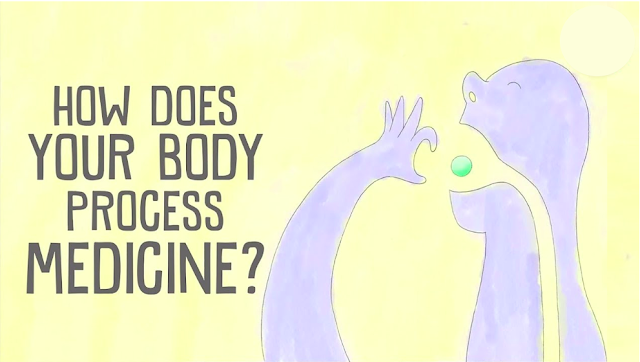Have you ever wondered what happens to a pain reliever when you consume it, such as ibuprofen?
A headache, a stiff back, or a throbbing ankle from a sprained ankle can all be treated with medication that goes down your throat. But how does it initially travel to its destination? The truth is that it travels through your body on the circulating blood stream, racing to complete its task before being caught by organs and molecules made to neutralise and remove alien chemicals.
Your digestive system is where this process begins. Imagine that you ingest an ibuprofen tablet to treat a hurting ankle. The tablet begins to dissolve in your stomach’s acidic liquids within minutes. Ibuprofen that has been dissolved enters the small intestine before passing through the intestinal wall and into a system of blood vessels. These blood vessels enter a vein, which then transports the blood and everything in it to the liver. Making it through the liver is the following phase. Enzymes try to react with the ibuprofen molecules to neutralise them as the blood and medication molecules in it pass through liver blood vessels. The metabolites, or broken ibuprofen molecules, may no longer work as painkillers. At this point, the majority of the ibuprofen successfully passes through the liver. It proceeds to leave the liver and enter the circulatory system of the body through veins. Some of the dose of the tablet has already entered the bloodstream 30 minutes after being swallowed. Every joint and organ in the body, including the heart, brain, kidneys, and liver, are passed through by this circulation loop.
Ibuprofen molecules attach to particular target molecules that are a part of the body’s pain response when they come into contact with an area where the pain response is active. Ibuprofen and other pain relievers prevent the body from producing substances that aid in the transmission of pain signals. The pain-blocking action grows as more drug molecules are accumulated, reaching its peak in one to two hours. Ibuprofen is then effectively eliminated by the body, with blood dosages typically dropping by 50% every two hours. The systemic blood stream picks the ibuprofen molecules back up after they separate from their intended targets. Another small portion of the overall amount of the drug is converted back in the liver into metabolites, which are ultimately excreted by the kidneys in the urine. A small bit more of the drug is neutralised and filtered out in each cycle of the loop from liver to body to kidneys, which continues at a rate of around one blood cycle per minute.
Fundamental Procedures:
These fundamental procedures are the same regardless of the medication you take orally, but depending on the substance, individual, and the way it enters the body, they may take longer or contain different amounts of medication. Although the dosage recommendations on medication labels are averages based on a sample population that does not include every patient, they can be helpful. And it’s crucial to use the proper dosage. The medication won’t work if it’s too low. The medication and its metabolites may be harmful if the dosage is too high. That applies to all drugs.
Children are one of the most challenging patient populations to determine the proper dosage for. This is due to the fact that both their bodies and how they take medicine change swiftly. For instance, during infancy and childhood, there are significant fluctuations in the level of liver enzymes that neutralise drugs. And that’s simply one of a great deal of complexities. The body’s ability to metabolise medications is influenced by factors such as genetics, age, food, illness, and even pregnancy. The specific dosage of medication tailored to your liver function and other parameters may one day be determined by routine DNA tests, but for the time being, reading the label, talking to your doctor or pharmacist, and taking the appropriate doses at the suggested times are your best bets.
Related Searches:
how does medicine know which body part is hurting, how does medicine know where to go in your body, how a tablet works in human body, how long does it take for medicine to take effect, how medicine works in human body animation, how does medicine work, how long does it take for a pill to get into your bloodstream, how a drug works in the body is called.
List of Tags:
Ibuprofen, ibuprofen, medication, blood vessels, veins, blood stream, stomach, digestive system, dissolve, enzyme, metabolite, molecule, liver, dose, dosage, drug, toxicity, ibuprofen, ibuprofen 400, ibuprofen 600, ibuprofen alkohol, ibuprofen dosierung, ibuprofen vs paracetamol, ibuprofen 800, ibuprofen dosage, advil, brufen, ibuprofen 400, brufen 600, brufen 400, ibuprofen 400mg, ibuprofen uses, advil cold and sinus, ibuprofen 800.



